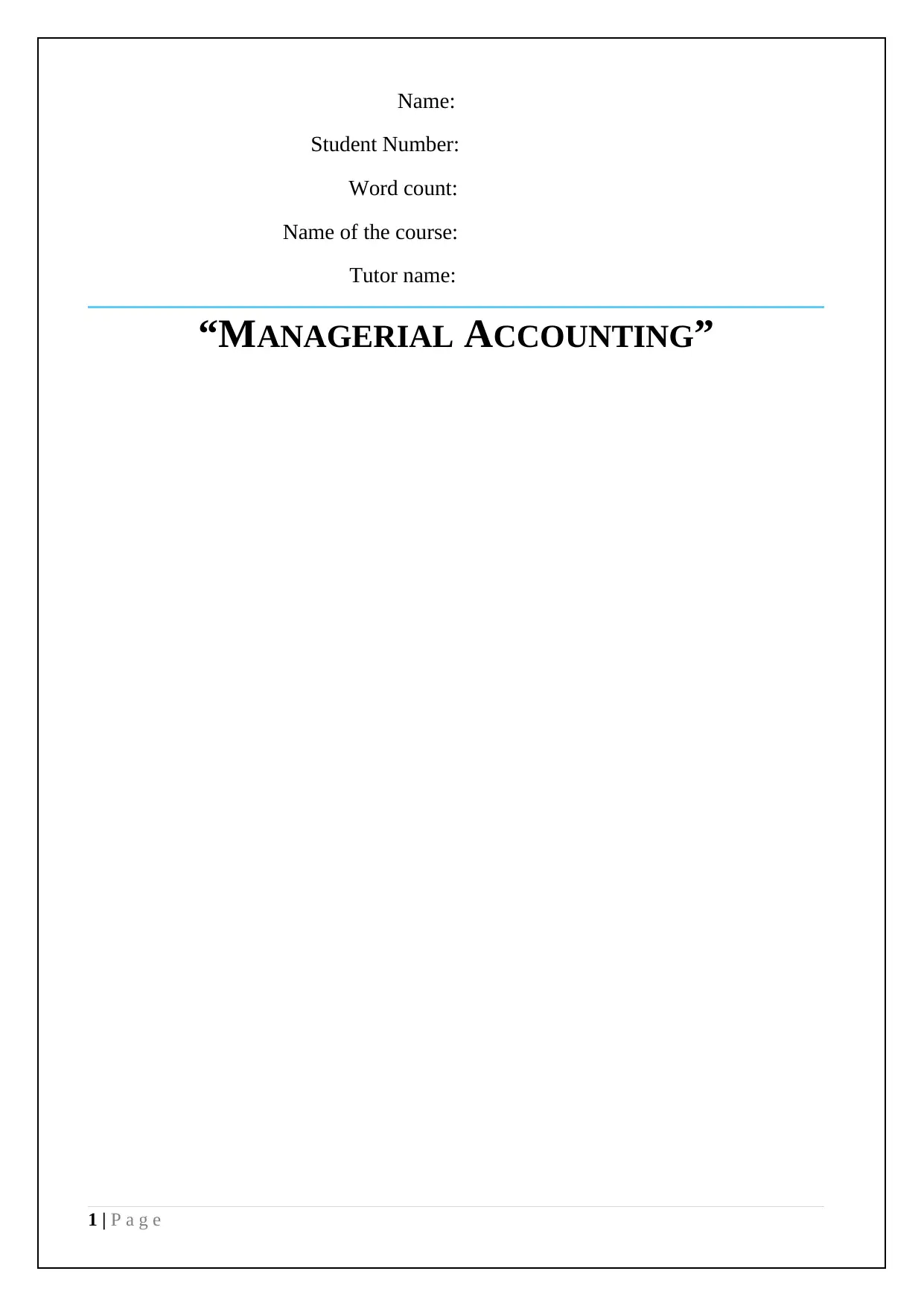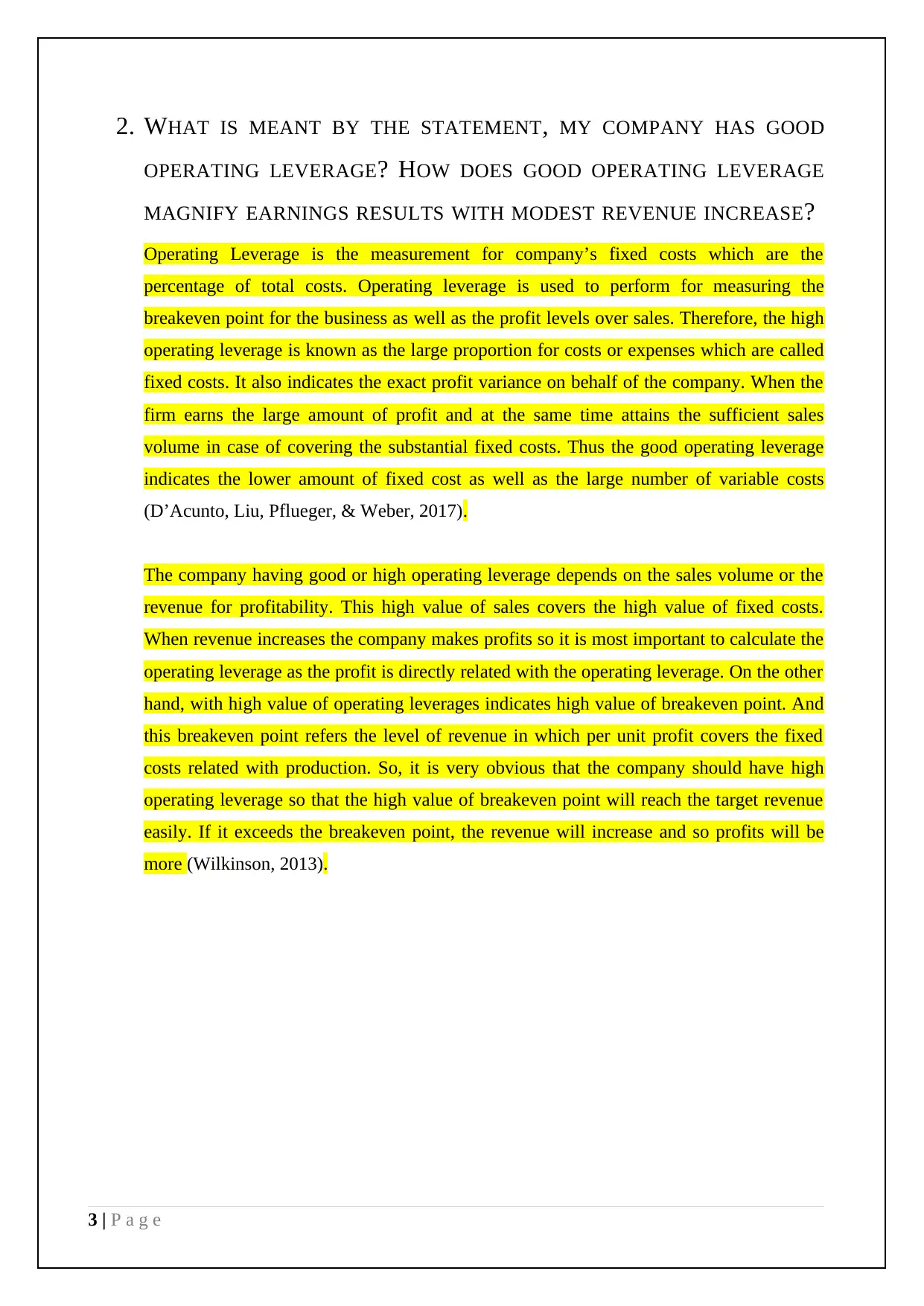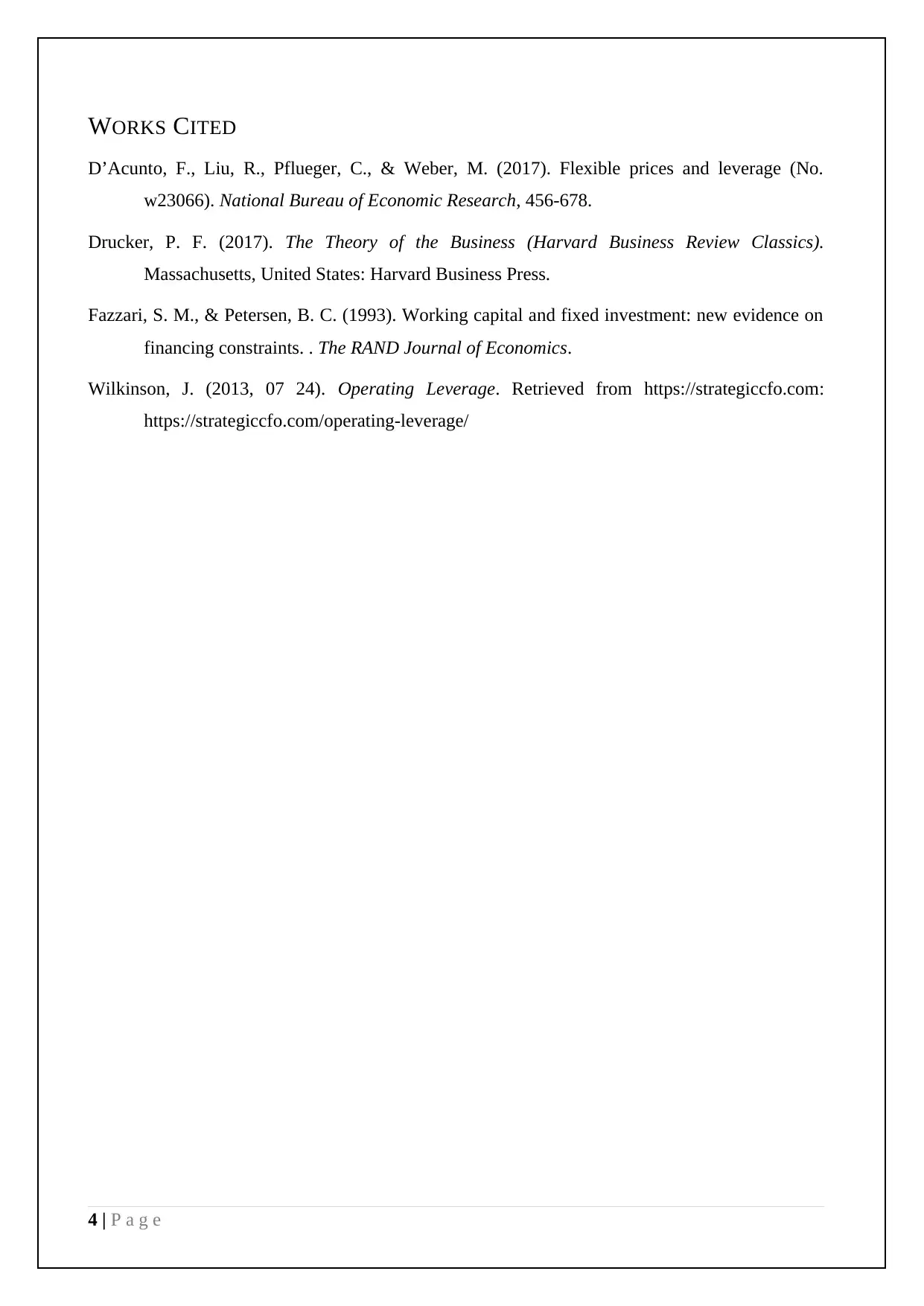Managerial Accounting Assignment: Fixed Costs and Operating Leverage
VerifiedAdded on 2019/10/01
|4
|748
|126
Homework Assignment
AI Summary
This managerial accounting assignment addresses the significance of controlling fixed costs within organizations and how operating leverage impacts a company's financial performance. The solution explains that fixed costs, unlike variable costs, remain constant regardless of production volume, making them a key area for managerial focus. The assignment also clarifies the concept of operating leverage, defining it as the proportion of fixed costs relative to total costs and its influence on a company's breakeven point and profit margins. It highlights how high operating leverage can magnify earnings with modest revenue increases and emphasizes the importance of efficient cost management for financial stability and profitability. The assignment draws on academic sources such as Drucker (2017), Fazzari & Petersen (1993), D’Acunto, Liu, Pflueger, & Weber (2017), and Wilkinson (2013) to support its arguments.
1 out of 4




